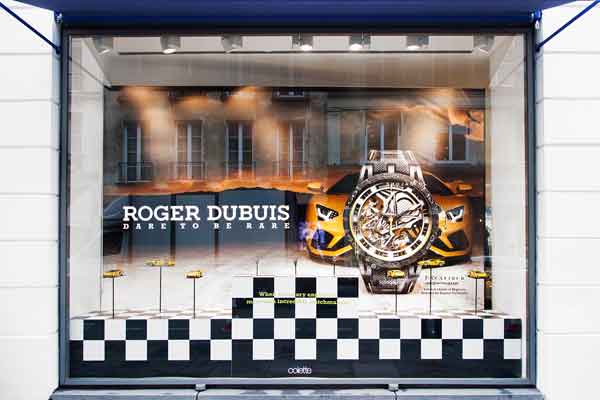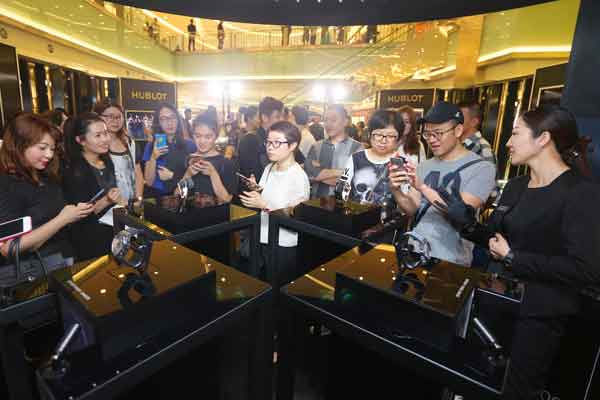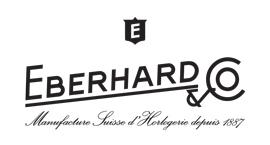Pop up: to appear or occur suddenly. For the watch industry, the definition can be slightly different. It’s more like: to appear – and disappear, suddenly. But that’s what pop-up stores are all about. They pop up in some unusual location, then disappear again a few days, weeks or months later.
Many watch brands are familiar with the concept. And their clients too, obviously. And yet, if you look at the idea more closely, it’s hard to see the rationale. In general, pop-up stores only present part of the collection; they do nothing to build up a loyal local customer base; they often don’t give any idea of the brand aesthetic (in terms of setting and services); they mobilise commercial forces that are as ephemeral as the premises themselves; and they may take precious sales away from local retailers who are there to stay. So are they a good idea, or a bad one?
Zenith: a textbook case
Opinions are divided. Zenith didn’t have to think twice: it has just opened a pop-up store in Place Vendôme, Paris. It had a leg-up – Zenith stepped into the place left vacant by Vuitton (they both belong to the same group, LVMH).
Julien Tornare (CEO) and Arnaud Vidal (Managing Director, France) are enthusiastic about the benefits: “We’re going to stage events, bring in clients from all over the world. We’ll have the full collection, and a museum space,” notes Julien Tornare. Place Vendôme is seen as an accelerator of prestige and sales in a domestic market now in a state of flux, having seen 30% of points of sale close this year.

Pros and cons
But beyond the Place, opinions are more circumspect. Laurent Picciotto (Chronopassion, not a Zenith partner) feels: “A pop-up store is only really worth it when the brand has no presence on-site. In the end, a pop-up store is a store, whether it’s pop-up or not.”
This view is shared by Mario Peserico, CEO of Eberhard & Co: “We never felt it was appropriate to use this sales channel, out of respect for our retailers.” But he does have opinions about the image conveyed by a pop-up store: “They can be interesting if they are used in a context that’s consistent with the brand image. If not, they can seem cheap, and that’s counter-productive. Pop-up stores should be used only if the conditions for a very high-end event are present.”

From Gstaad to Geneva
So, the two key elements of a successful pop-up store are 1) high-end and 2) no local retailer. Hysek has taken this on board. “Each year, we are present at the women’s tennis tournament in Gstaad (WTA Ladies’ Championship Gstaad). We have noticed that people are reluctant to cross the threshold of a boutique on the Rue du Rhône or the Place Vendôme, while a pop-up booth is immediately accessible to everyone. Once this initial contact has been facilitated, we can in a few minutes convey the spirit of the brand, and reach a clientele that might not necessarily have come into a shop.”
Hublot offers the same point of view: “A pop-up shore requires less commitment than a boutique. It can also test the waters for locating a permanent shop there in the future. We might also consider opening a second boutique in a city where we already have one, and in this case a pop-up store gives us the opportunity to try out the location, and see if there might be scope for two boutiques. Finally, at a time-limited event like the Bol d’Or Mirabaud in Geneva we make very few sales, but we make contact with new clients who might come into one of our stores later.”

The other side of the coin
But pop-up stores don’t just have advantages. One major downside is the cost. There’s the rental on the premises, plus the events, the receptions, the parties and clients’ travel expenses. The special events can entail considerable set-up costs. At some sites, the facilities have to be built quasi-permanently, for a presence of just a few weeks. And then there’s the sales force: they have to be good, available, fully trained and operational, and ready to work sometimes seven days a week. Staff often end up being “borrowed” from nearby stores, which can be tantamount to robbing Peter to pay Paul. In the end, it’s all about compromise.









